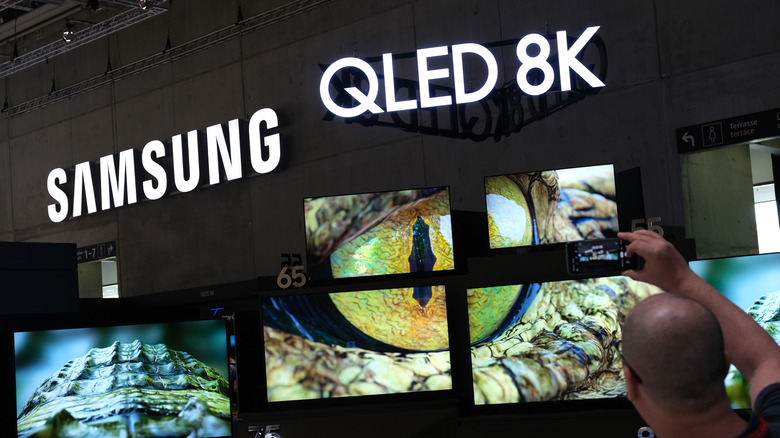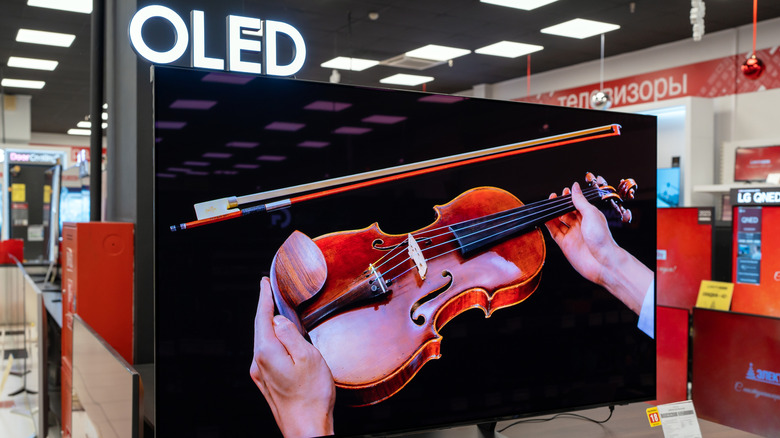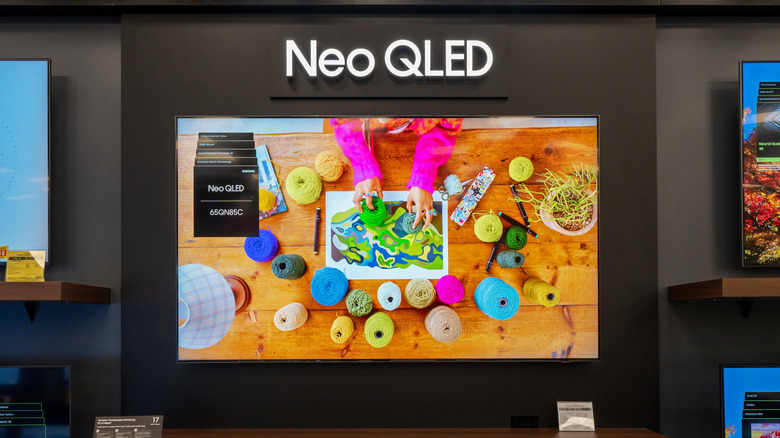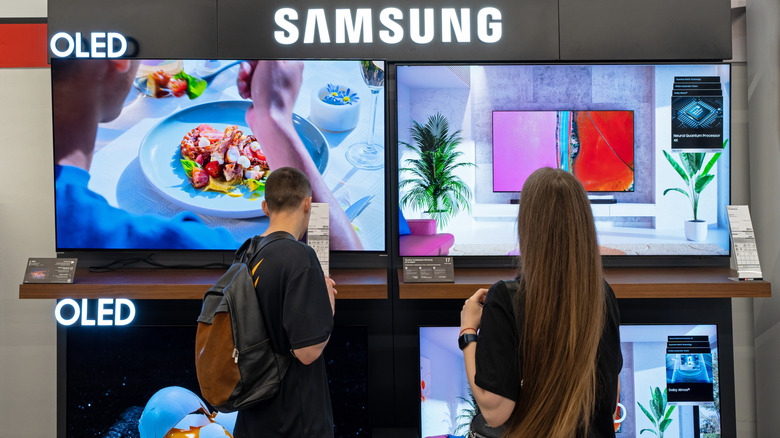OLED Vs. QLED TVs: Which One Offers The Best Picture Quality?
We may receive a commission on purchases made from links.
When you set out to buy yourself a new television, there are a lot of factors at play. You need to choose the right size for your space, make sure it has HDR10 or Dolby Vision capabilities and maybe most importantly, it needs to fit within your budget. Although televisions have become much more affordable in recent years as technology becomes more readily accessible and widespread, there are still several different tiers to TV pricing. This usually comes down to what kind of TV it is. Yes, you are more than likely looking at a TV with 4K resolution, but not all 4K TVs are created equal. There is no better illustration of that than with two of the most popular and highest rated types of TVs: OLEDs and QLEDs.
OLED, which stands for organic light-emitting diode, is the older of the two technologies, going all the way back to the tiny 2007 Sony XEL-1. It has stood at the top of the food chain when it comes to high-quality television visuals ever since. However, in 2017, Samsung launched its QLED tech, which is short for quantum dot light-emitting diode, and the company also formed an alliance with Hisense and TCL with the hopes of replacing OLEDs at the top of the pyramid with QLEDs. Well, both of these types of televisions have their benefits, and no matter what circumstance you might find yourself in needing a new TV, either one will be a great option. If we are talking strictly about picture quality, though, there is really only one winner: OLED.
Two vastly different technologies
Despite being around a decade longer, OLED televisions are still the crème de la crème. Although their names only have one different letter, OLEDs and QLEDs are exceptionally different technologies. QLEDs are an offshoot of LCD TVs, which have been the most popular type of flat-screen TV for many, many years now. LCD TVs essentially utilize large backlight panels in order to create the image on your screen. The added wrinkle with QLEDs is a quantum dot filter that the backlight has to pass through, which enhances the contrast of the image and boosts the colors. The picture quality on a QLED is great, but OLEDs are simply set up to be better.
OLED TVs are not LCD televisions. There is no backlight panel. Instead, there are thin layers of organic films filled with millions of subpixels inside the television that are placed between two conductors. When you add electricity, those individual subpixels emit light themselves. There is nothing getting between the light and the display, giving you a bright image, the greatest contrast, and the most accurate colors. Contrast is really where OLED TVs shine because they are able to give you a true black. If something is completely dark, the subpixels in that area of the image will simply remain off rather than still projecting light. This is even more impressive with HDR content. This technology also gives you a better consistency across the entire screen, as there may be backlight panels on a QLED that are slightly off in their brightness levels. You won't get a better picture display at home than with an OLED.
QLEDs do have their great picture qualities
There is one place where QLEDs can outpace OLED TVs when it comes to picture, and that is brightness. While the overall picture quality of an OLED is better, there are some scenarios where you are not getting the most out of that image. For instance, if you are putting a TV in your living room that has big windows and gets a bunch of sunlight for most of the day, an OLED may not be what you want to get here. Instead, a QLED may make for a better option because of their ability to produce incredibly bright images that won't get washed out in a bright room.
The reason for this is because of a change Samsung made to its QLED TVs in 2021 with the introduction of the Neo QLED TVs that feature mini LED backlighting. This allowed the company to put ten times as many LED lights into those panels than before, creating some of the brightest images you can get on a television. Thanks to these extra lights, you will be able to perfectly see your TV in the brightest and darkest of rooms, especially if you are watching something with HDR. These Mini LED lights also reduce blooming, which can be an issue for a really bright image. While OLEDs are still very bright and would work in most circumstances, their benefits are more apparent in darker rooms. This is why picture quality cannot be the sole determining factor when selecting a TV. You need to think about your situation first.
Better picture, higher price
Because OLED TVs have an overall better picture quality than QLEDs, you are going to pay more for that quality. Let's take a 55-inch 4K television from Samsung to see just how different the prices will be. The standard QLED TV is called the QE1D. Although the listed retail price is $999.99, Samsung is currently selling this TV at a massive discount at $479.99, less than half of the retail price.
Next is the Neo QLED model, called the Samsung QN90D. For a 55-inch model, you are looking at a retail price of $1,999.99, a significant step up from the regular QLED for that upgraded Mini LED backlighting. Although, Samsung does have it currently discounted at $1,499.99. Samsung does offer another Neo QLED TV at this sized called the QNX1D, though reviews roundly put it below the QN90D in terms of performance, but it is a lesser price at $1,799.99, which is discounted to just $849.99.
Then there is the OLED. The latest and greatest from the company is the Samsung S95D, and it is the most expensive of all of these TVs as well. A 55-inch model retails at $2,599.99, so you are paying a pretty penny for the best picture quality. However, that is currently discounted by Samsung to $1,599.99.



